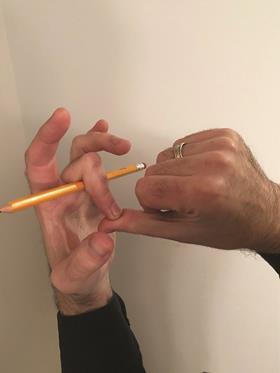Professor of violin at Jacobs School of Music, Indiana University, with some exercises to improve your left-hand articulation. From 2018

The following is an extract of a longer article in The Strad’s March 2018 issue. To read further, download now on desktop computer or buy the print edition
Explore more Technique like this in The Strad Playing Hub
When it comes to left-hand articulation, it is important to separate the finger muscles from the wrist muscles: the wrist shouldn’t ‘help’ the fingers when we play. Effective articulation is about speed and momentum, not strength, so the finger muscles must be free, not ‘tied’ to one another. Our finger movement should come from the base knuckle; but once the finger is on the string, any pressure applied should come only from the middle knuckle. (If we use the base joint, the top joint, nearest the fingertip, will lock. This can affect vibrato and intonation.) Any muscles we don’t need should be unused; fingers that we are not using should be relaxed and hanging over the strings, not tense and sticking out like porcupine spines!

INDEPENDENCE OF THE FINGER JOINTS
Left-hand articulation is about speed and momentum, not strength. However, once the finger is on the string and you need to exert pressure, that pressure should come from the middle knuckle. To help you use the middle joint without activating the joint nearest your fingertip:
- Hold a pencil as shown in figure 3 [right], as close to the base joint as possible. Make sure you can still move the top joint easily. You should be able to do this with every finger.
- Try the same thing without the pencil.
- Now on the violin, play a scale or some Schradieck while collapsing the top joint of every finger, so that your finger pads fall flat and relaxed on the string. This can help teach you to separate your finger muscles and be more aware of what your fingers are doing.
Plus, a bonus section not featured in the magazine:
ARTICULATION ‘ON THE FLY’
To achieve fluid shifts, it’s important to be able to articulate independently of your sliding movement up and down the fingerboard: in other words, you need to be able to disengage your flicking/slapping motion from your sliding motion. To practise this:
- Slide your hand evenly up and down the fingerboard, while bowing freely and slapping your left-hand fingers on random notes, without altering the shape of your hand.
- Play the finger patterns from studies by, for example, Schradieck or Ševčík, all the while sliding the hand up and down the fingerboard, so that the notes are wrong and out of tune, but the finger patterns are correct. It’s a great mind exercise, because the sensation in the fingers stays the same but you have to disengage your ears. Of course, you would never play like this, but it is a good way to gain complete control of your left-hand fingers!
To see the full article complete with music examples and repertoire suggestions, download The Strad’s March 2018 issue on desktop computer or buy the print edition
Watch: ‘Taming Tension’ - a presentation by Grigory Kalinovsky at the 2017 ASTA conference
Read: Dealing with Dystonia
Read: 3 simple trill exercises for players and teachers
Read: Replacing shifts with a stretch: Daniil Shafran’s left-hand technique
Explore more Technique articles like this in The Strad Playing Hub
Technique: Left-hand calisthenics
- 1
- 2
- 3
- 4
- 5
 Currently reading
Currently readingTechnique: How to achieve clean and effortless definition in the left hand, by Grigory Kalinovsky
- 6
- 7
- 8
- 9
- 10
- 11
- 12
- 13
- 14
- 15

























































No comments yet